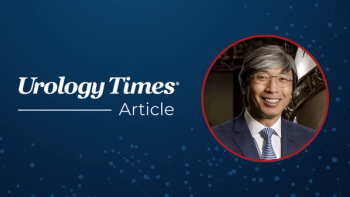
Bladder cancer surveillance: Challenges and opportunities
In her latest blog post, Adele M. Caruso, MSN, CRNP, discusses challenges related to bladder cancer surveillance and how they can be overcome.
Patients who require surveillance for bladder cancer present several challenges, such as anxiety and adherence. In this blog post, I will review some of the challenges and opportunities associated with this patient population.
Anxiety related to the procedure. Bladder cancer surveillance and the interval evaluation with a cystoscopic examination is determined by authority opinion, and by professional societies such as the
Patient satisfaction is a baseline value, and improving patient satisfaction is consistent with institutional and practice goals. Likewise, aims for quality improvement may include optimizing the cystoscopy flow process in a caring environment.
Nonmuscle-invasive bladder cancer (NMIBC) is a condition that requires regular cystoscopic surveillance. It is associated with a recurrence rate of about 50%-70%. Approximately 10%-20% of these patients will progress to muscle-invasive disease. Patient relief is often profound when disease-free status is confirmed with negative pathology, which also suggests pent-up anxiety. Furthermore, patients frequently request and expect a shortened cystoscopy cycle (a process that begins with patient registration and ends with patient discharge in the outpatient surgery microsystem) and additional face time with their provider and staff.
Adherence to a schedule. Bladder cancer patients who require long-term surveillance return to our outpatient centers on average from one to four times per year. Compliance among these individuals can be poor. Studies show that few strictly adhere to their surveillance schedules. There are competing reasons for this such as other health issues, but not all have been explored.
New guidelines. New guidelines for NMIBC patients have recently been issued by the AUA and Society of Urologic Oncology. The new guidelines provide a risk-stratified clinical framework for the management of NMIBC and an associated
A role for advanced-practice providers (APPs). There are many opportunities for APPs to provide care for this oncologic population. Bladder cancer is a condition for which frequent procedural surveillance is required. Timely reporting of cystoscopy results to patients is imperative as mentioned, and this contact presents the occasion for education and emotional support. Additionally, navigating patients through ambiguous results such as atypia can be very comforting. This encounter is a highly favorable time to reinforce surveillance schedules.
As always, please feel free to share your perspective by emailing me at UT@advanstar.com or posting a comment below.
More blog posts from Urology Times:
Newsletter
Stay current with the latest urology news and practice-changing insights — sign up now for the essential updates every urologist needs.
















